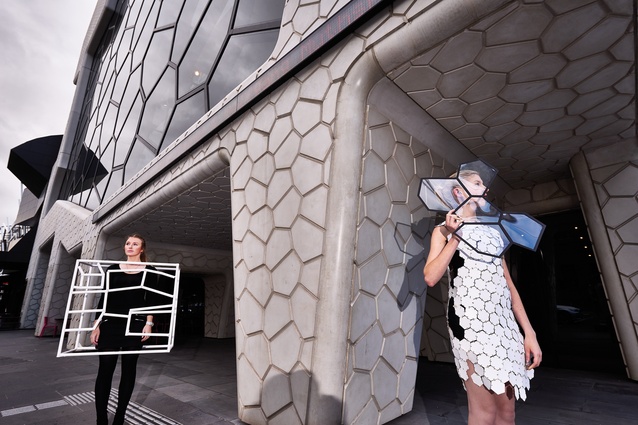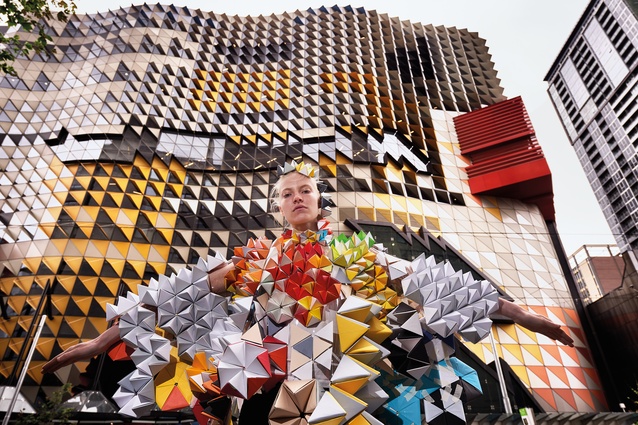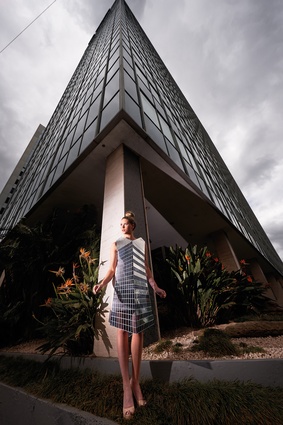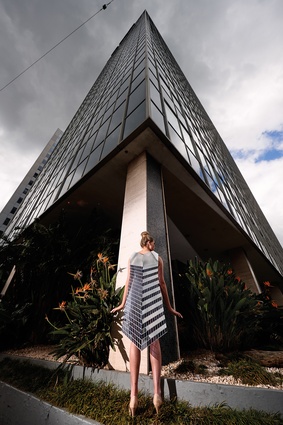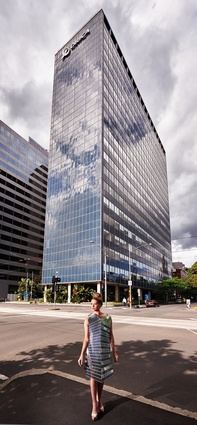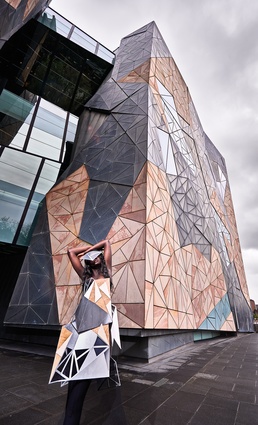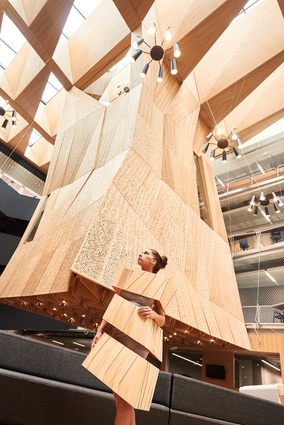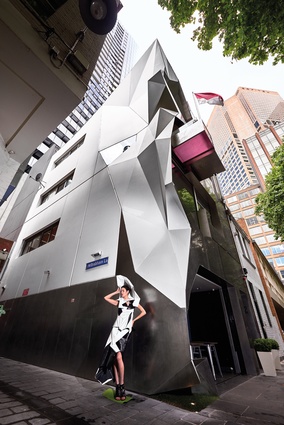The sartorialists: Wearing the city
Students from Monash University Art, Design and Architecture transform Melbourne's contemporary architectural icons into wearable art.
Students from Monash University Art, Design and Architecture have transformed a selection of ten iconic Melbourne buildings into wearable art, including RMIT’s Design Hub by Sean Godsell, ACCA by Wood Marsh and the new Melbourne School of Design by John Wardle and NADAA. Working in collaboration with the architects as well as artist Callum Morton, fashion designer Miriam Borcherdt and architect Cate Hall, the designs dissect the buildings’ language into human scale, exploring the way the tectonics react to human movement. They use a range of techniques from folding and pleating, to wrapping and draping.
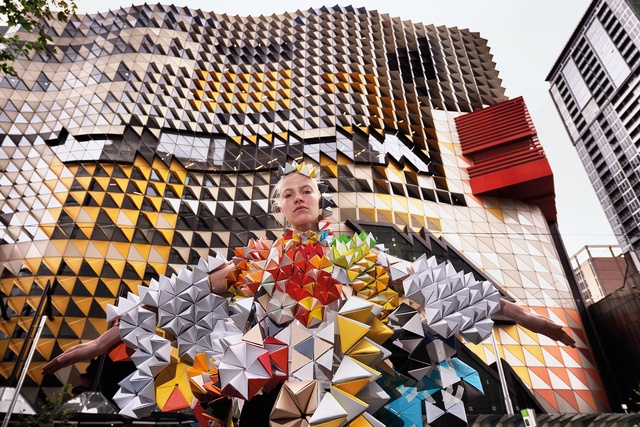
Architecturally, the effects of surface design can be seen in many of the designs as they are a literal translation of a building’s facade into a textile. Of particular note is Emilia Firus’ and Alexis Infeld’s interpretation of Lyons Architecture’s Swanston Academic Building: the patterns and forms of its facade are extruded and recrafted into an origami dress. Other projects also play on concepts of silhouette and form.
The project is inspired by the legendary 1931 costume ball of the Society of Beaux-Arts Architects, in which over twenty of New York’s preeminent architects of the time dressed up as a building they had designed. It’s a tradition that lives on in many of New York’s architecture schools.

The students’ designs will be presented for one night only on Saturday 15 November, 2014 at MPavilion.




